The wonderfully retro-looking Fujifilm X100F is a camera designed for the streets. DSLRs and mirrorless cameras take great photos, but they can be bulky, noisy, and a bit obvious. And compact cameras might lack image quality.
Enter the Fujifilm X100F. It’s a rangefinder camera with a neat design, portability, and great looks. Does it offer the quality to stand up as a treat photographer’s dream? Read on to find out.
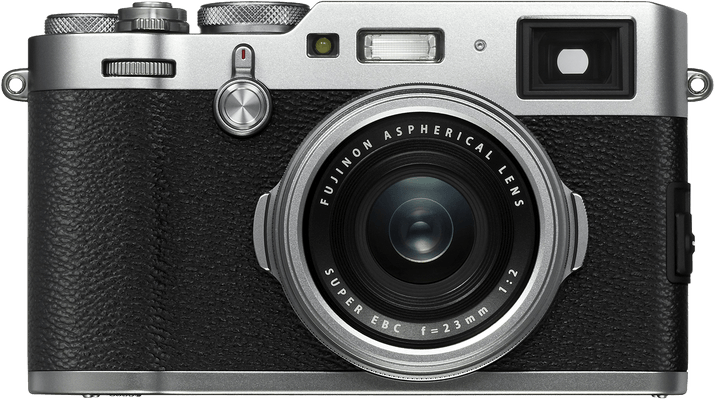

| Released |
Released
2017
|
| Sensor Format |
Sensor Format
|
| Lens Mount |
Lens Mount
Fixed
|
| Megapixels |
Megapixels
24 MP |
| Autofocus Points |
Autofocus Points
325 |
| Maximum ISO (Native) |
Maximum ISO (Native)
12,800 |
| Frame Rate |
Frame Rate
8 fps |
| In-body Stabilization |
In-body Stabilization
|
| Video |
Video
|
The X100F has a 23mm f/2 prime lens, which gives you a 35mm-equivalent field fo view. It’s a great general lens, not too wide, but also not too tight. The lens is permanently attached to the camera. A 24MP APS-C sensor captures the image coming from the lens.
It feels and handles like a 35mm rangefinder camera from the ide of the previous century. From a distance, it’s indistinguishable from one. This makes it inspiring to use, but also introduces limitations in the digital era.
This question is partially answered when you look at its price. As a “compact” device selling for a 4-digit sum, it’s not the first option that comes to mind when searching for a new camera. Some might consider it a luxury product. It’s not the first camera you’ll buy as a beginner, and by a large chance, it’s not going to be your only one.
The inconspicuous retro design, 35mm-equivalent lens, fairly large sensor, and good autofocus make the X100F an ideal choice for street photography. But, of course, you’re not limited to this genre. It’s a joy to use in many other applications where the 35mm view is adequate.
The 23mm f/2 lens on the X100F is fixed and non-retractable, meaning that is doesn’t fold back into the body when the camera is turned off. It’s quite a slim design, though.
It’s different from Fujifilm’s XF 23mm f/2 lens made for interchangeable-lens cameras. Its optical performance is great in most circumstances. When focusing fairly far away from the camera, it’s razor-sharp all the way from f/2.
Where things go bitter, though, is close-up performance. The lens is capable of focusing as close as 10cm from the sensor (5-6cm from the lens), which promises great macro possibilities. But, from around 20cm, image quality drastically decreases, delivering very soft images in close-up circumstances. Even at f/4, it’s still noticeably unsharp.
Close-up photography is not the primary application of this camera. Thus, this issue isn’t a deal-breaker, but it’s something to keep in mind.

Behind the lens of the X100F, there is a 24MP sensor of 1.5x APS-C size. Unlike on most modern camera sensors, the pixels here are not arranged in the traditional Bayer layout. Instead, they are structured in 6×6 clusters. This layout is called X-Trans. According to Fujifilm, this array makes the low-pass filter unnecessary, promising sharper results ultimately.
Dynamic range is excellent, but not market-leading. I’ve found that while shadow details are easily and nicely recoverable, highlights tend to clip quickly. So, if you shoot RAW, I recommend underexposing by two-thirds of a stop. However, when shooting JPEG (which is a strong point of the camera otherwise), this will be a limitation.
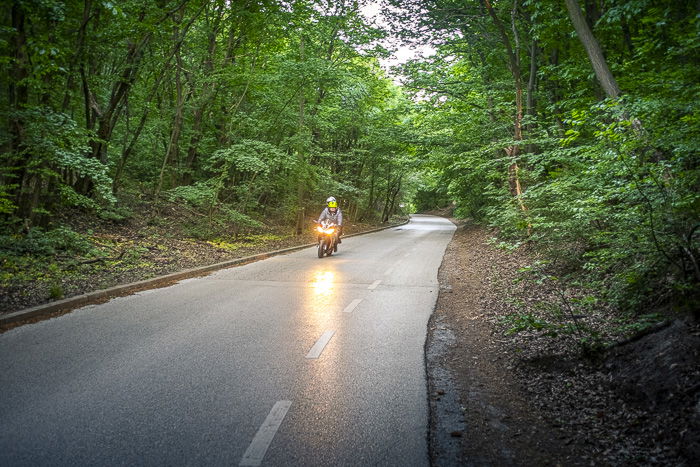
Low-light dynamic range seems to be better than any other APS-C camera I’ve used. Even at ISO 3200, I still had some recovery headroom, especially in the shadows. High-ISO noise levels are lower than usual, too, but nothing extraordinary in 2020. Images up to ISO 6400 are almost always acceptable.
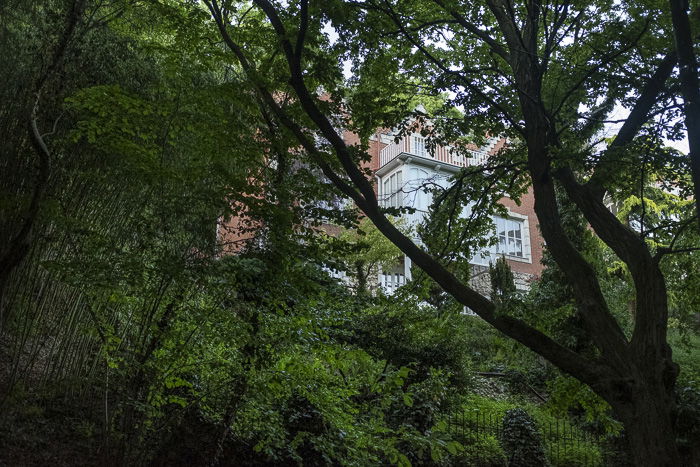
There’s not a lot to mention here. You wouldn’t buy the X100F for video use, and you shouldn’t. While video quality (sharpness and colors) is nice, recording options top out at 1080p/60fps. As there is no image stabilization in this camera, handheld shooting is not really an option if you want a more-than-decent outcome.
Accessing video mode is already quite lengthy, it’s listed at the end of the drive mode menu. There’s no quick recording option, no separate button, and there’s no way of storing different settings for video and stills.
So, don’t count on this camera for any serious video work. But if it’s the only thing you have at hand, it will probably do the job.
The X100F’s autofocus system is similar to what you’d expect in a modern mirrorless. On-sensor phase-detection points cover the entire area of the sensor. Compared to contrast detection systems, this method is much quicker, and in certain situations, it’s more precise as well.
Tracking accuracy is good, but it’s not quite fast. You won’t get quickly moving subjects into focus in time, only if they remain at roughly the same distance from the camera. It’s more than adequate for street scenes but too slow for grabbing action shots.
Low-light accuracy seemed to be better than average. Even in dimly lit streets and woods at blue hour, the system would grab a faint point of contrast, and focus on it. This was definitely a pleasant surprise and is probably due to the f/2 aperture.
There are single-shot and continuous autofocus modes. Manual focus is also available, and the camera helps you achieve sharpness with focus peaking. The focusing function ring is not the most precise one I’ve seen, but it’s usable.
Fujifilm’s cameras are controlled differently than conventional. Instead of the well-known mode dial with manual, program, and priority modes, Fujifilm gives control of all exposure parameters independently of each other at all times.
You have a ring for changing the aperture, right on the lens. You have a dial on the top of the camera for controlling shutter speed. Hidden under the shutter dial, there is a dial for ISO. To change ISO, you lift up the shutter dial and turn it. All of these can be set to either a defined value or left at auto.
So, to use the X100F in aperture priority mode, simply set your desired aperture, and set the shutter speed to A (Auto). Likewise, to use shutter priority, set your aperture to A on the lens, and set your desired shutter speed.
Exposure compensation has a separate dial on the top of the camera, ranging from -3 to +3 stops, and a custom mode. You can set custom compensation with another dial if you chose to map it elsewhere.
On the back, you’ll find a joystick (focus lever), and 4-way controller, a quick menu button, and some function buttons. A 3″ non-touch-sensitive screen, which is bright and sharp, occupies most of the area there.
There are three extra dials, a two-way function lever, and several customizable buttons across the X100F. You can map basically any function to any of these. All this makes the camera extraordinarily customizable.
The menu system is straightforward and logically structured. Getting used to it took me 30 seconds, finding some hidden features was harder though. A quick menu gives you 16 fields of fully customizable quick functions.
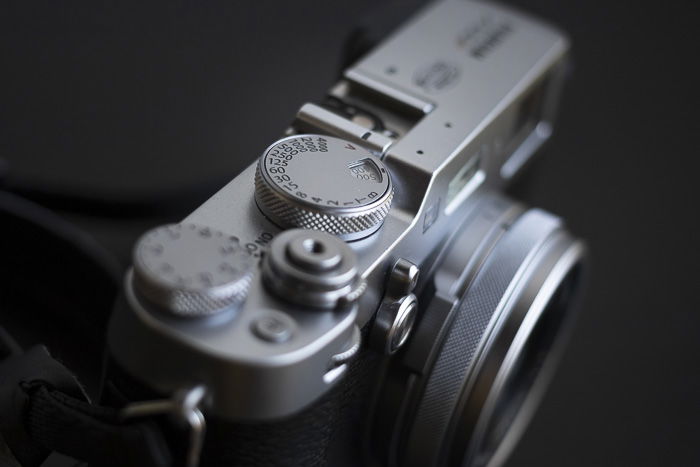
A special signature feature of the X100F is the hybrid optical-electronic viewfinder. Similarly to traditional rangefinder cameras, the optical viewfinder gives a shifted 35mm image. Its focus overlay is in sync with the focusing system, so you still know where the lens focuses. Parallax error is well-corrected. You only see a slight difference in perspective, but not in framing.
But there’s a twist to this viewfinder. You can have a snippet of the digital live view appear in the corner, which gives another level of confidence in focusing. Or, you can completely hide the optical part, and use the electronic viewfinder for everything. Use the function lever on the front to do so. I’ve found the electronic viewfinder to be subpar to many new models. It took plenty of tweaking to be able to use it for accurately judging colors and exposure. At least it’s nice to have it, though. Of course, you can also use the back LCD.
This is one of the reasons why the X100 has been so popular among street photographers. There’s no need to ditch the optical viewfinder for the advantages of an electronic one, or vice versa. You can have both.
The X100F is larger and heavier in real life than I expected. It’s the same size as Fujifilm’s larger, interchangeable-lens mirrorless cameras, such as the X-T30 (review coming!). It measures 127mm x 75mm x 52mm and weighs 469 grams.
It’s built from metal and durable plastic and feels very solid in the hands. It houses a small battery, which seems to deliver around 4-500 shots per round.
The grip, as you’d expect from a camera like this, is almost non-existent. This works well as a design element, although holding the camera for lengthened periods is less comfortable.
The X100F is, sadly, not weather-resistant.
The fixed-lens design enabled Fujfilm to include a leaf shutter instead of the conventional curtain shutter. This has several advantages. Leaf shutters are usually more durable. But there’s not a high chance that you overshoot any shutter’s life duration with casual street photography anyway.
The shutter is capable of capturing images at framerates of up to 8 frames per second.
Leaf shutters also let you fire flashes at any shutter speed. Unlike normal cameras, which are limited by their sync speed, you can shoot with a flash at 1/4000s with X100F. This might lead to quite dramatic images.
To make sure that you don’t overexpose in such a situation, Fujifilm included a 3-stop ND-filter. It’s really useful for controlling the incoming light. It basically adds another variable of exposure, albeit a limited one.
The shutter button is designed to accept a standard mechanical remote release cable. This further adds to the retro feel and experience. I don’t really see anyone using a remote release with this camera, though.
Fujifilm has a long history of manufacturing photography film. It produced, and to some degree, still produces some legendary film types, such as Velvia or Astia.
So, with the digital revolution, designers decided to implement film “simulations” in their cameras as processing profiles. These simulations replicate the signature looks of Fujifilm’s most popular film types.
They have a film vibe and feel to them. Funnily, I couldn’t tell if I genuinely think this or just read enough about it to believe so – but they truly look great.
My favourite of them is Classic Chrome, a setting that’s not based on a specific film type. It’s rumoured to be mimicking Kodachrome, a classic film type manufactured initially by Kodak. And indeed, it looks similar.
Needless to say, these simulations only apply to JPG files. But they’re the reason people love to shoot JPGs with this camera.
During these times, I wasn’t able to use the X100F where it most excels, in street photography. Still, even the process of doing photography with this camera was in itself a source of joy. Being the fourth generation of the series, it’s a mature model that lacks the annoying little things many other cameras have.
It’s a camera that consistently does a few things really well. You won’t use this for action or sports. For street photography, travel, some landscapes and portraits, and casual shooting, it delivers excellent results.
What I personally loved about it above all is its size, portability. I’m used to carrying a heavy, full frame DSLR setup for most of my work. Getting similar quality shots with a camera of third the size is always a fantastic experience. A few days ago, I actually did a 5-hour walk with only this camera in the woods nearby while testing it. You’ve seen the results of that throughout this article. It didn’t pose any kind of comfort issues, even when I slung it on my back with the strap.
Another truly great thing about the X100F is the colors you get out of it, even in RAW. Some people call this “color science”, but it’s rather a question of calibration. Colors are so excellent straight out of the camera that I almost entirely skipped tweaking them on the images you see here.
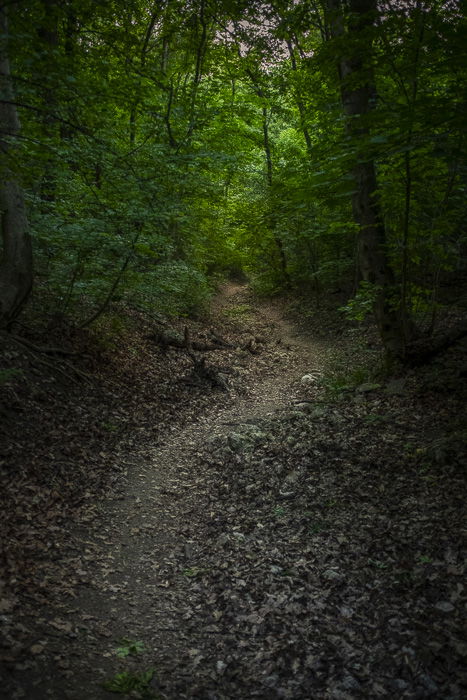
While the niche of compact premium cameras is not crowded, there are alternatives.
One of them is actually the successor of this camera, the Fujifilm X100V. The fifth generation of the series has been announced a couple of months ago. It improves on the X100F with a redesigned lens, a newer sensor, a tiltable touchscreen, 4K video, and slightly better autofocus. But its retail price is also significantly higher.
Another well-known competitor to the X100F is the Ricoh GR III, which I just reviewed recently. While it targets the street photography community too, it does so with a very different toolkit. It features a 28mm-equivalent lens and a comparable but stabilised 24MP APS-C sensor.
It’s a much smaller camera, weighing about half and measuring two-thirds the size of the X100F. It’s built following more modern design principles, resulting in a matt black finish. Overall it is quite a dull-looking device. But that’s a great advantage in street photography. It also costs slightly less.
It’s very hard not to love the X100F. Clearly, a lot of thought and care went into creating this little camera. You might be slightly ruffled, perhaps rightfully, by its price. But this is a speciality product, for a special niche of photographers.
It’s for those who prefer style and portability over versatility. For those, who prefer invisibility as a photographer over a more comfortable grip. And for those, for whom the joy of doing photography is just as important as the outcome of it.
Check out the Fujifilm X100F on Amazon here.
| Measurement |
Measurement
Score
|
| Main Features |
Main Features
|
| Extra Features |
Extra Features
|
| Construction and Durability |
Construction and Durability
|
| Handling and Ergonomics |
Handling and Ergonomics
|
| Value for Money |
Value for Money
|
| Total Score |
Total Score
|

